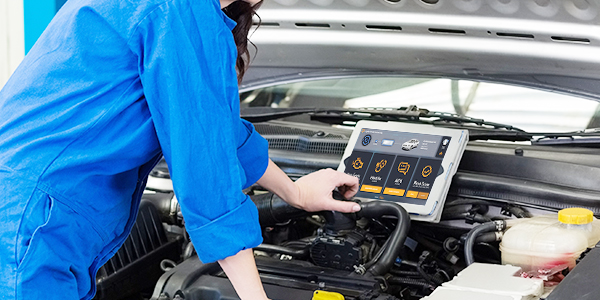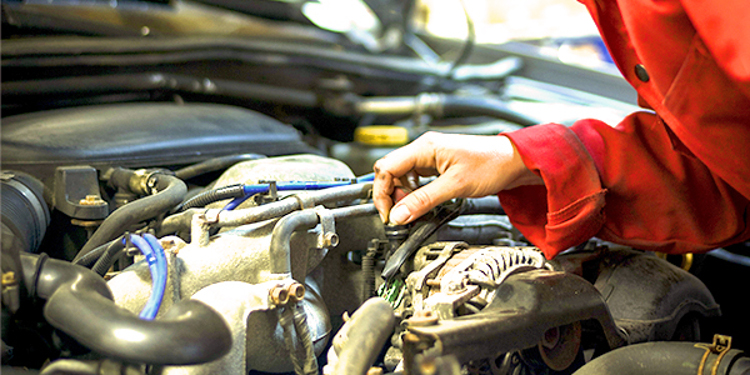Your mechanic, no?
Well, maybe not.
It’s 2018, and while 2025 may sound like a futuristic number, seven years is not all that far way. Seven years ago, Prince George was born, The Toronto Star broke the Rob Ford fiasco(s), and there was a blackout at the Super Bowl. Those things don’t feel that far in the past—and 2025 will be upon us before you know it.
It’s coming fast, and there’s a huge problem facing the Canadian auto aftermarket, attacking on two fronts: rapidly advancing vehicle technology and a shortage of skilled tradespeople.
Vehicles are evolving, as are the skillsets needed to safely repair them. At the record setting Toronto Canadian Collision Industry Forum in January 2018, almost all the talks addressed technological advancements in some way (if not directly), with many industry leaders impressing the importance of being prepared.
“By 2020 our workforce will look completely different” — Marie Artim, VP talent & Acquisition, Enterprise
“This industry needs to encourage more young people to be, and do better” — Gabriel Merino, founder, Motivated Painters
Separately and anecdotally, the collision industry in Canada is reporting a growing challenge in hiring new talent. Independent shops and larger chains are already starting to feel the pressure, and it will only accelerate between now and 2025. There will indeed still be classic technicians in 2025, but they will be overcome with both demand and the challenges associated with needing to fix both the hardware and the software in next generation vehicles.

Put another way: what will 2025’s technician be like, and what can we do as stakeholders to insure that there are enough of them to handle the influx of demand and technological complexity?
2025’s technician
If all trends align, and we assume that we avoid a crippling supply shortage, the technician of the future will be young, digitally savvy, and increasingly female.
That’s the rosy outlook. 2018’s Canadian automotive aftermarket is an estimated 90% male, and while many of seasoned professionals are rockstars at auto body work, the geeky computational aspect of fixing software problems (pre and post scan, recalibration, digital graphical interfaces for code clearance, touchscreen diagnostics) remains a growing challenge.
What can we do to avoid a near-future aftermarket talent crisis?
Collision and auto repair professionals
- Participate in the Aftermarket Labour Market Intelligence program. The Automotive Industries Association (AIA) of Canada is nearly ready to release important information regarding the state and needs of the aftermarket labour market, along with an online tool (AutoConnect) designed to close some of the gaps in the hiring process. At minimum, as an independent shop or large chain, everyone should be aware of the initiative and its intent. Here’s the one-pager.
- Understand that the status-quo is no longer an option. Shops that insist on business-as-usual run an increasing risk of being left behind. The ‘boys club’ nature of the floor and the general rejection of fancy-pants technology so often observed in shops will soon be shattered, whether we like it or not. Better to embrace the change now than be caught unawares when inevitable changes come barreling through!

The Canadian automotive aftermarket makes up over 1% of our GDP.2
Insurance carriers
Put resources against managing this looming risk. A talent crisis in the aftermarket translates to increased cycle times across the board. Technology is only going to become cheaper and more in-demand, so even the base models will come with technology that is currently only on high-end vehicles. If there’s a limited amount of people who know how to recalibrate the 2024 Civic, cycle times will bottleneck against it, full stop.
OEMs
Invest in high quality educational materials for shop techs. Consumers will demand more CASE (Connected, Automated, Shared, Electric) vehicles. These products will be increasingly tough to fix properly. If a struggling, demand-pressured aftermarket begins to compensate quality for quantity, the odds of an unsafe vehicle hitting the streets increases. No matter who’s at fault and who pays for the consequences, the manufacturer’s reputation is almost always part of the story.
Regardless if we can mitigate or reverse the ongoing and worsening talent issue, proper training and educational materials will go a long way to keeping safely repaired vehicles on the road.
There’s a big role for the dealerships to play in this changing landscape, but that’s another story!
Data providers
Design solutions with the next generation of technicians in mind. Companies like our own are far from immune to these radical changes—as the end user evolves, so must our proficiency in design, accessibility and data flow. Generation Z (the Millennials’ kids) is growing up, and will be a major part of the workforce in 2025.
They have never known a world without the Internet, and grew up on smartphones and Google. This has profound implications for the software we provide to both insurance carriers and the collision repair sectors.

Everyone, including suppliers and governments
Support the education of the next generation of technicians. It’s an investment we can’t afford not to make. Besides the direct impact on body and mechanical shops, the auto aftermarket’s health relates directly to insurance cycle times. It contributes to over 1% of the Canadian GDP.2 It indirectly affects the reputation of an OEM. It’s absolutely critical for everyone’s safety on the road.
Visibility into the industry is particularly obscured for women, resulting in a massive pool of untapped talent and resources that could very well bridge the supply concern.
The two AIA programs to support are:
- AutoConnect, or ALMI: the online tool, job board and research program to help introduce fluidity into the aftermarket hiring process
- AWAKE, or Advancing Women in Automotive Knowledge Exchange: the initiative for supporting current and creating new opportunities for Canadian women in the aftermarket industry

Solera Canada (Audatex) stands firmly behind these programs, and we will be making investments in order to support their objectives. We hope our fellow stakeholders will heed the call and join us in this mission to address the simple, yet critical question: Who will fix cars in 2025?
And how can we help enable her success?
Sources
- (1) Car Software: 100M Lines of Code and Counting, June 2014
- (2) Based on GDP and industry revenue projections, February 2018
- (3) AWAKE Needs Assessment Report, March 2016
- (General): Automotive Industries Association of Canada






